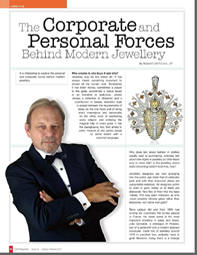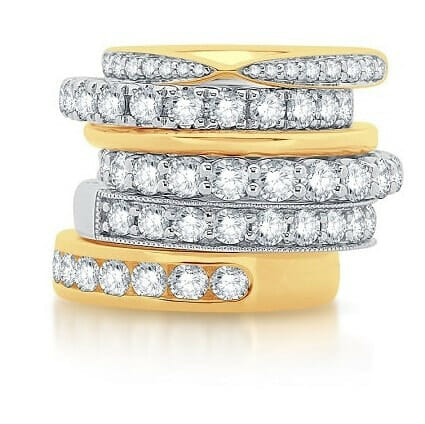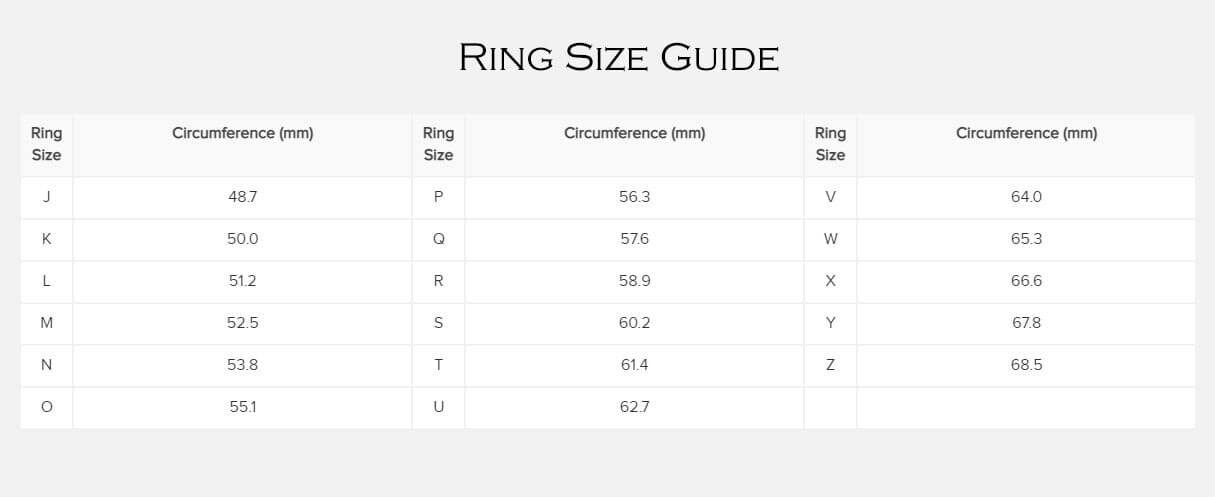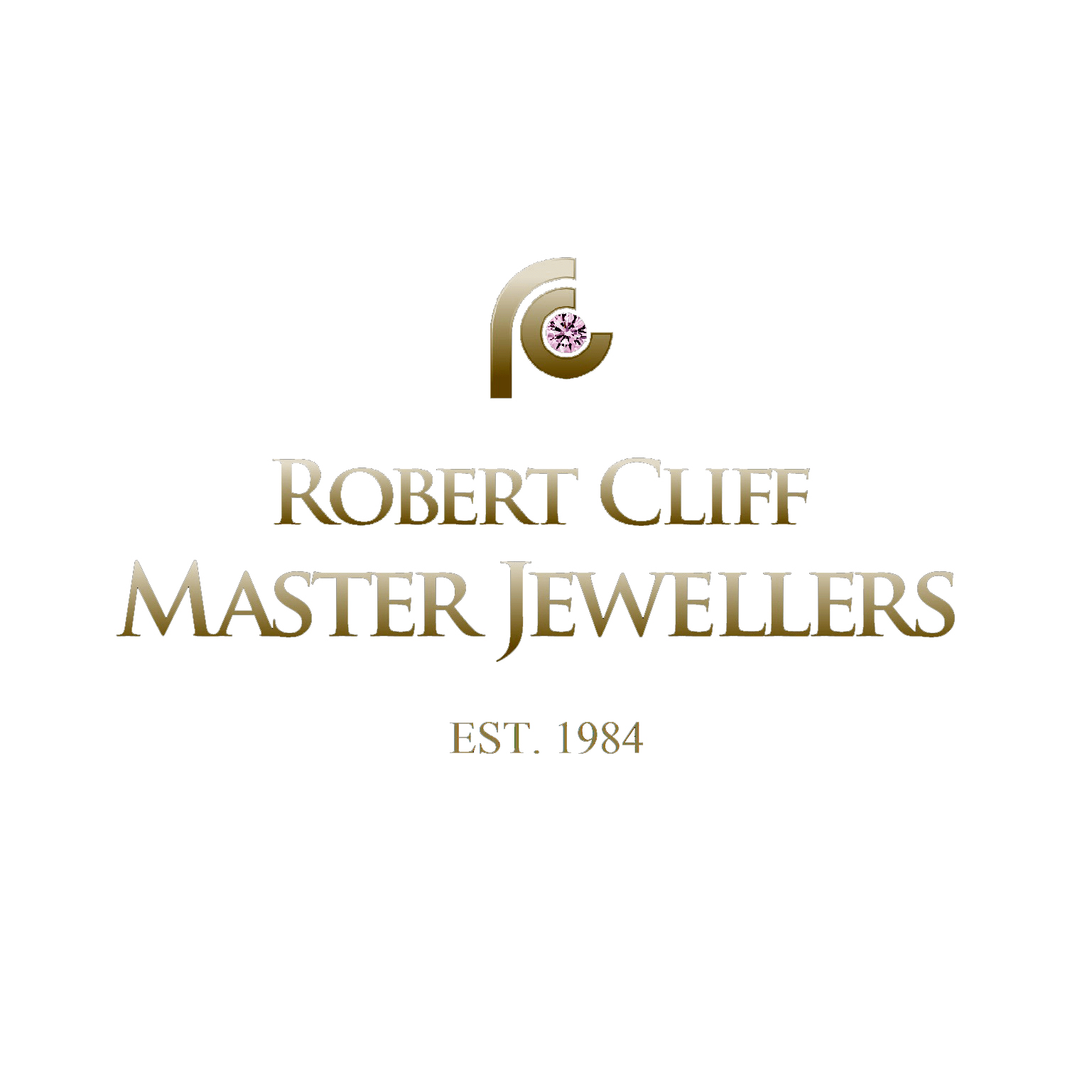It is interesting to explore the personal and corporate forces behind modern jewellery.
Who creates it, who buys it and why?
Jewellery may be the oldest art. It has always meant something important to almost all the human race; sometimes it has been money, sometimes a prayer to the gods, sometimes a status boast or an invitation to seduction, almost always a reflection of character and a contribution to beauty. Jewellery style is poised between the requirements of dress on the one hand and of airing one’s importance and personality on the other, even of expressing one’s religion and enlisting the magical help of one’s gods; it has the background, too, that artists in every medium, at any period, speak to some extent with a common language.
Why does talk about fashion in clothes usually lead to purchasing, whereas talk about new styles in jewellery so often leads only to more talk? Is the jewellery scene really becoming livelier? And if so, how?
Jewellery designers are now emerging into the public eye more than for centuries past and with their improved status are using better materials. All designers prefer to work in gold; nearly all of them use diamonds. Very few of them like the base metals. This may seem irrelevant, as who could possibly choose glass rather than diamonds, iron rather than gold?
Rene Lalique did, who from 1905 had among his customers the richest people in France, made some of his most important jewells in glass and brass. Julio Gonzales, a colleague of Picasso, son of a goldsmith and a modern abstract sculpture, made lots of jewells around 1910 in punched iron, probably none in gold. However, today, there is a change back to solid quality, more gold, more diamonds and precious stones.
Much of this new emphasis in the word’s jewellery is due to the astonishing social revolution since 1945, the distribution of wealth, the rise of the mass market. In the wealthier countries many people can now buy Jewells, whereas fifty years ago only the rich could do so. The present enterprise in jewellery is due not only to changes in taste and spending power, but perhaps mainly to the colossal increase in the number of buyers. The spread of education, of newspapers and of television has brought a much wider appreciation of art. Apathy and caution naturally influence anyone buying and selling expensive jewellery – the risk of experiment can lead to bankruptcy, and thus our designs are influenced, less money risk, more enterprising designs.
Another cause of the new trend is the Science of Publicity – it helps ones image; a lively image helps sales; and the only way to get publicity is to provide news. Hence the unexpected recent gallivanting of some of the oldest and most dignified retailers. They need the publicity which young designers can get them, to harness and locate the new purchasing power wherever it may be.
However, most of our dynamic enlightenment has come from De Beers. The main driving forces behind the publicity enlightenment; they set up International design competitions, and advertised diamonds in most of the wealthiest countries in the world and have set up diamond publicity committees in eleven of them. Giant corporations have the same power today as the great princes of the past. All credit to them for showing the same public spirit! But what they cannot have is personal taste, often so necessary to harness an artist’s vision.
Competitions are the substitute and they are a matter of luck; nobody knows what the word ‘best’ means, nobody can foretell what will be the corporate opinion of judges who do not know each other; nobody can be sure how the selected drawings will look when made up, nobody can know whether the made-up prize winners will in fact be sold or prove commercial tragedies. If a competition is run by experienced retailers, who think they know what sells easily, the results will be unexciting and will achieve no publicity; a jury of people that have developed an appreciation of beauty, especially in the arts may make a startling choice and get the publicity, but the result may not be to the tastes of the shoppers.
Artists are helped much more by a precise, personal brief from their client than by the chance verdict of a jury thousands of miles away which did not know what is was looking for and which often does not even see its finished selection. Competitions are no more than the appetizer which should create better private patrons.
De Beers have helped to spread the lure of diamonds throughout society; it is no longer a matter of “diamonds for duchesses”. The same goes for the Chamber of Mines of South Africa; they may have revived the fortunes of gold. Gold is often linked with Fort Knox and with money and often seems too precious and awe-inspiring to impinge on ordinary life; this fear of the legendary into a desire for the charming has been transformed.
Precious jewellery is now recognized as art, exhibited and enjoyed not as a menial disguise for minerals, but as a positive facet of human nature – a desire, and a want that is now a need and a need that is readily fulfilled by most!
More coming soon…












